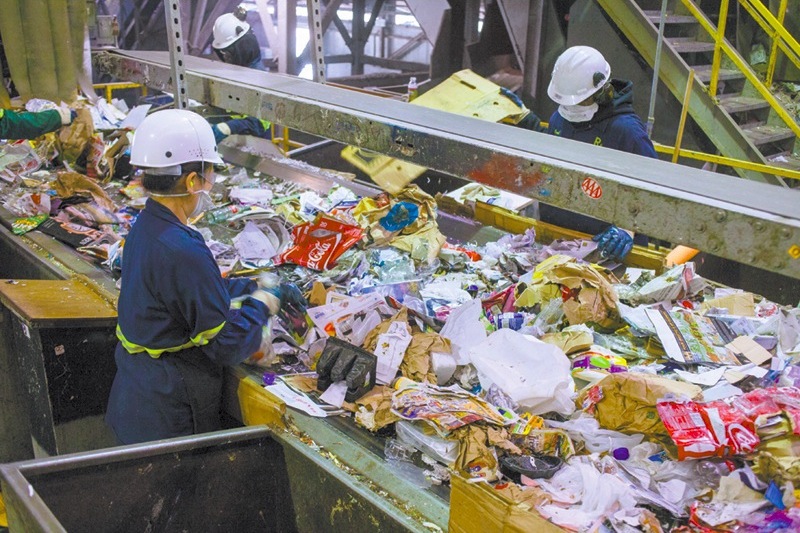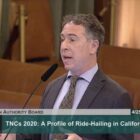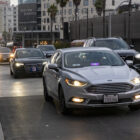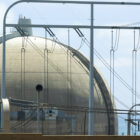If you think of Recology as a set of blue, green and black bins that hang out in the alley of your house that you roll out to the curb weekly — you have no idea.
Over the last 10 years, what San Franciscans have been thinking of “garbage collection” has been transformed into something vastly different and much more industrial. What it actually does is closer to mining than just dumping trash.
Last month the 91-year-old worker-owned company announced that 80 percent of what San Franciscans put in the bins is going somewhere other than the landfill, a vast improvement on the 34 percent national average.
All that requires a highly complicated sorting company, like a vast switching station for stuff. The 650 tons a day of recyclables hauled by Recology is divided up almost entirely by hand, by a vast army of sorters into 20 different recycling programs that look at garbage as raw materials for something else. One redirects stuff to thrift stores, gypsum recycling, a wood-to-energy program, mattress recycling and of course residential and commercial compost, which makes its way from San Francisco curbs to the vineyards and produce farms of Northern California.
The company has two programs for contractors tearing out and redoing houses (from small to big jobs). It has a couple of e-waste recycling programs for appliances and batteries. And there is an entire paint building, where the half-cans of paint people throw away are sorted by color, remixed and given away. (Get your free paint here). And most famously, the company has an onsite sculpture garden where artists in residence pull beauty out of garbage. Even the plants are scavenged.
The 44-acre campus at Pier 96 has three vast corrugated-roof warehouses, the largest one is 200,000 square feet. They are giant, loud, industrial plants with bulldozers and trucks shoveling piles of stuff into giant heaps, massive metal and rubber conveyor belts running in different directions up several flights of steel stairs. There are stacks of giant bales: paper, cardboard, crushed clamshell trays, all watched over by the fiercest and fattest seagull population in the Bay Area.
Although the job is dangerous — many of the 2,100 workers have to wear hardhats, earplugs and safety gear — pay is $20 to $25 an hour plus participation in an employee ownership program and solid benefits. It may be one of the most important environmental jobs in the city, but as long as the waste streams come into the facility comingled, they have to be separated mostly manually.
For all of this, Recology only makes 10 percent to 15 percent of its costs back from the sale of materials. Some of the most valuable is aluminum, which can actually be recycled into aircraft parts, and office paper, whose pulp can be turned back into the inside of the cardboard boxes that surround almost every food item.
Recology does charge for the bulk compost it custom-mixes for farms, but in general, recycling still doesn’t make money. It’s not just that it costs a lot to remanufacture something — since products are just not made locally anymore, the cost of the fuel to transport materials takes a toll. The remainder, 85 percent or so, ends up being the $25.77 Recology charges for household pickup service.
With San Francisco’s stated goal of “waste zero,” that means Recology is going to have to deal with the remaining, and most difficult, 20 percent. The stuff that gets dumped by dozens of trucks into an enormous, stinking pit that is scraped into trucks destined for the landfill (imagine a giant version of the trash-compactor room in “Star Wars”).
Part of it is technology. Plastic — increasingly more and more of the waste stream — is commercially recyclable only insofar as it can be separated by color and polymer. Recology CEO Mike San Giacomo said at the VERGE San Francisco green business conference in November: “metals can be recycled over and over. I don’t know why we can’t do that with plastic.” The Recology plant has new optical sorting machines that sense the color and weight of plastic bottles and shoot them with air jets into different areas, destined for new packaging, fiberfill for clothing or the landfill.
And part of it is policy. Recology is a member of the California Product Stewardship Council, an organization pushing for a new idea in the way we think about industry and manufacturing: extended producer responsibility. In this way of looking at production, the company that manufactures a product is responsible for the materials in it, and therefore its reclamation or reuse. It’s based on the idea that manufacturers have more ability to change the components in their products.
This approach acknowledges that many of the great leaps in working smarter with waste have come from political decision-makers. The city’s big hope is in the future of composting. Since residential composting became mandatory in 2009, the rate of trash diversion has gone up, but 36 percent of compost is still going to landfills. Increasing the supply of compost takes education across the city. But Recology is also working hard to increase demand for it on the farm. Spokesman Robert Reed reports that some of the farmers taking the compost aren’t just using it as a soil amendment, but to plant cover crops that fix greenhouse gases back into the soil. If this were implemented nationally with all our food waste, Reed said, the U.S. could reduce its greenhouse gas emissions by 20 percent.
Hundreds of Recology trucks have been slathered with new posters that simulate a glass window on the side of the trucks, showing a cutaway to old pizza boxes, strawberry caps and Chinese food takeaway containers.
“We want people to think about their refuse,” Reed said. “When you slow down and stop to look, it’s not garbage at all. These are all resources, and there is a relationship between these resources and the environment.”

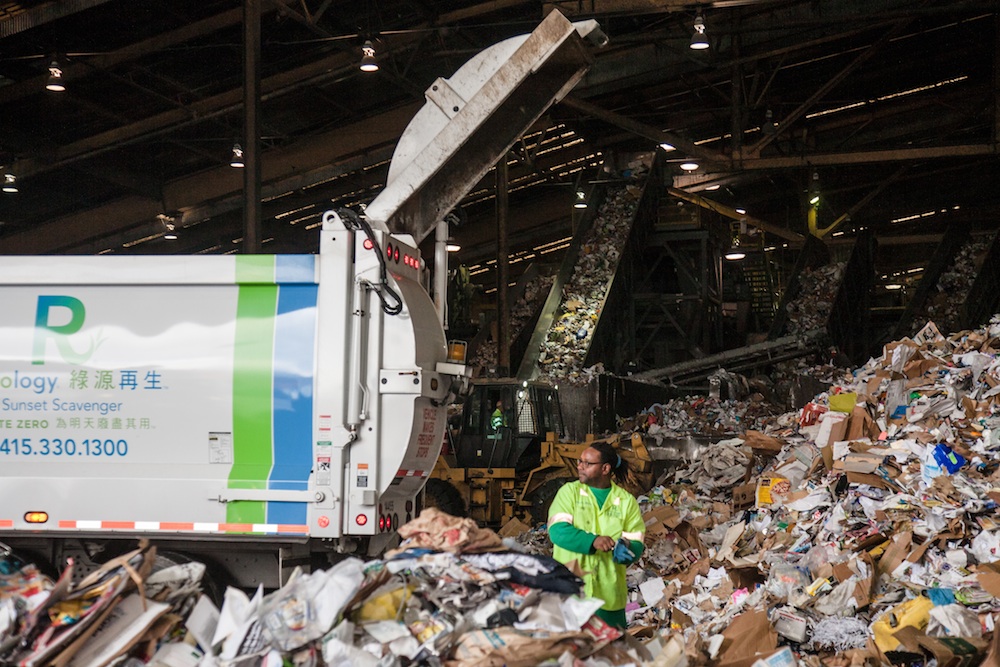
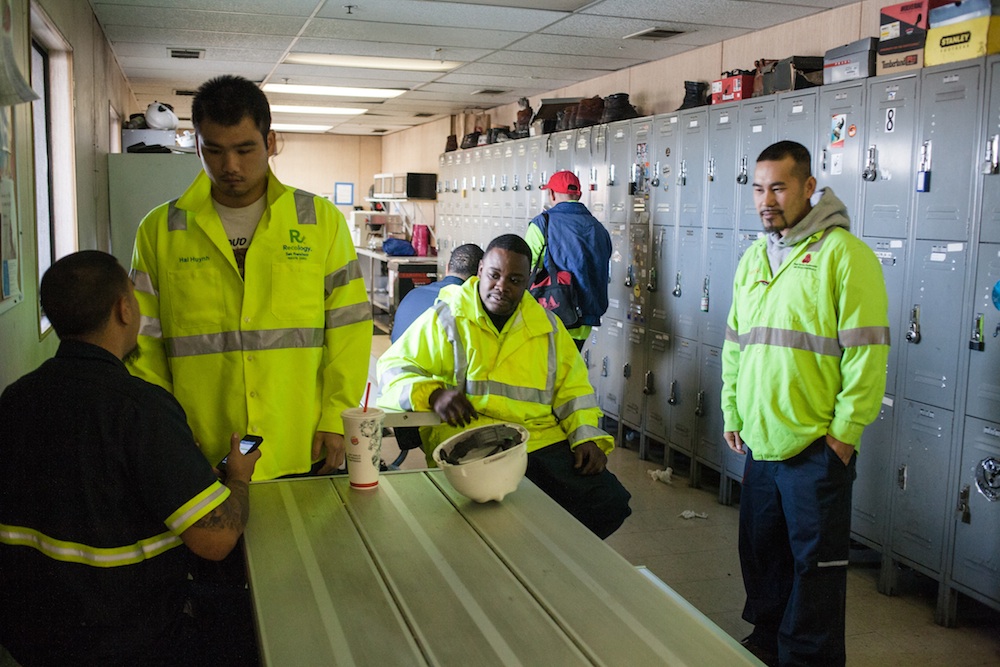
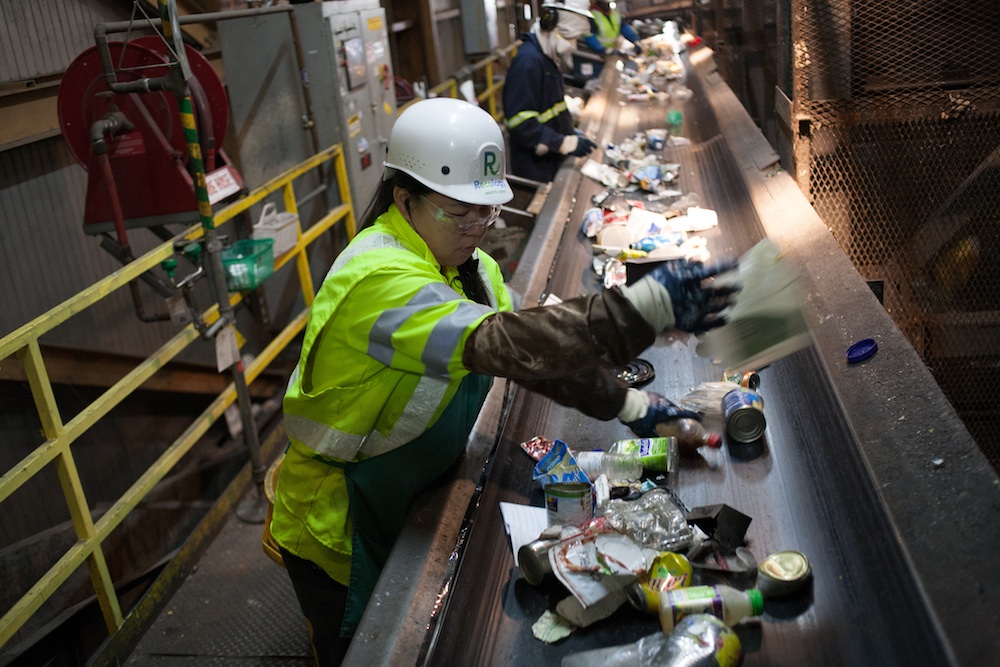
This story appeared in the Winter 2012-2013 print edition of the San Francisco Public Press.
